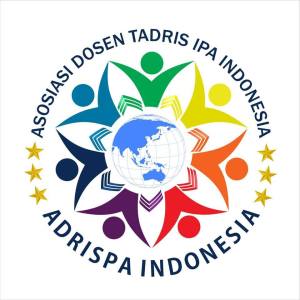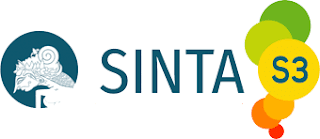IMPLEMENTATION OF THE TREFFINGER MODEL BASED STEM APPROACH TO STUDENTS’ CREATIVE THINKING SKILL
DOI:
https://doi.org/10.21154/insecta.v3i1.4195Keywords:
Treffinger Model, STEM Approach, Creative Thinking,Abstract
Creative thinking can encourage students to solve problem. Learning Treffinger model provides opportunities for students to understand the concept through the process of solving problems creatively. The approach used to support this model is STEM approach. STEM learning that encourages increased thinking skills creative. This research aims to determine the implementation learning with the STEM-based Treffinger model, the application of the Treffinger model based STEM on creative thinking skills, and factors that affect learning. This research uses an approach quantitative and using Quasi Experiment with the Posttest-only Design with Noneequivalent Group. Population that used are students of class VIII at SMP Ma'arif 1 Ponorogo total of 84 students. The reseach sample from control class was 28 students and from the experimental class a total of 29 students. Data analysis techniques that used are independent test sample t test. Based on the data analysis, it was found that (1) implementation of the Treffinger model learning based on STEM is carried out very well, (2) the ability to think creatively in the class that applies the model STEM-based Treffinger is better than non-implemented the model, (3) the teacher's ability to deliver the subject matter and students who play an active role have an important role in the implementation conducive learning.References
Alt, D., & Raichel, N. (2020). Enhancing perceived digital literacy skills and creative self-concept through gamified learning environments: Insights from a longitudinal study. International Journal of Educational Research, 101(March), 101561. https://doi.org/10.1016/j.ijer.2020.101561
Annuuru, T. A., Johan, R. C., & Ali, M. (2017). Peningkatan Kemampuan Berpikir Tingkat Tinggi Dalam Pelajaran Ilmu Pengetahuan Alam Peserta Didik Sekolah Dasar Melalui Model Pembelajaran Treffinger. Edutcehnologia, 3(2), 136144.
Antink-Meyer, A., & Lederman, N. G. (2015). Creative Cognition in Secondary Science: An exploration of divergent thinking in science among adolescents. International Journal of Science Education, 37(10), 15471563. https://doi.org/10.1080/09500693.2015.1043599
Awalin, N. A., & Ismono, I. (2021). The Implementation Of Problem Based Learning Model With STEM (Science, Technology, Engineering, Mathematics) Approach To Train Studentsscience Process Skills Of Xi Graders On Chemical Equilibrium Topic. INSECTA: Integrative Science Education and Teaching Activity Journal, 2(1), 114.
Bahrum, N. B., & Samsudin, M. A. (2021). Kesan Pendekatan Pembelajaran STEM Secara Teradun Dalam Bilik Darjah Sains. 5(1), 1222.
Dare, E. A., Ring-Whalen, E. A., & Roehrig, G. H. (2019). Creating a continuum of STEM models: Exploring how K-12 science teachers conceptualize STEM education. International Journal of Science Education, 41(12), 17011720. https://doi.org/10.1080/09500693.2019.1638531
Darmadi, H. (2017). Pengembangan Model dan Metode Pembelajaran dalam Dinamika Belajar Siswa (Cetakan Pe). Deepublish.
Darminto, B. P., Studi, P., Matematika, P., & Muhammadiyah, U. (n.d.). Meningkatkan Kemampuan Pemecahan Masalah Matematis Improving The Ability Of Students Mathematical Problem Solving. 101107.
Fairuzabadi, A. et all. (2017). Penerapan Model Pembelajaran Inkuiri Terbimbing Dengan Video Berbasis Kontekstual Dalam Pembelajaran Ipa Pada Materi Suhu Dan Pengukurannya Di SMP. Jurnal Pembelajaran Fisika, 6(1100106).
Gregory, E., Hardiman, M., Yarmolinskaya, J., Rinne, L., & Limb, C. (2013). Building creative thinking in the classroom: From research to practice. International Journal of Educational Research, 62, 4350. https://doi.org/10.1016/j.ijer.2013.06.003
Hastjarto, T. D. (2019). Rancangan Eksperimen-Kuasi. Buletin Psikologi, 27(2), 187203.
Hermansyah, H. (2020). Pembelajaran IPA Berbasis STEM Berbantuan ICT dalam Meningkatkan Keterampilan Abad 21. Jurnal Ilmiah Profesi Pendidikan, 5(2), 129132. https://doi.org/10.29303/jipp.v5i2.117
Ibriza, F. (2019). Pengaruh Model Gallery Walk Melalui Media Diorama Terhadap Kemampuan Berpikir Kreatif Siswa Pada Materi Cahaya Dan Alat Optik Kelas VIII Semester Genap SMP N 9 Salatiga Tahun Pelajaran 2018/2019. In Skripsi. Institut Agama Islam Negeri Salatiga.
Isnaini, M. Duskri, S. M. (2016). Upaya Meningkatkan Kreativitas dan Kemampuan Pemecahan Masalah Matematika Siswa Sekolah Menengah Pertama melalui Model Pembelajaran Treffinger. Jurnal Didaktik Matematika, 3(1), 1525.
Jankowska, D. M., Gajda, A., & Karwowski, M. (2019). How childrens creative visual imagination and creative thinking relate to their representation of space. International Journal of Science Education, 41(8), 10961117. https://doi.org/10.1080/09500693.2019.1594441
Octavia A., S. (2020). Model-model Pembelajaran. Deepublish.
Octaviyani, I., Kusumah, Y. S., & Hasanah, A. (2020). Peningkatan Kemampuan Berpikir Kreatif Matematis Siswa Melalui Model Project-Based Learning Dengan Pendekatan Stem. Journal on Mathematics Education Research, 1(1), 1014.
Puspita, M. (2018). Pengaruh Model Pembelajaran Treffinger Untuk Pokok Bahasan Bunyi Terhadap Motivasi Belajar Dan Kemampuan Berpikir Kreatif Skripsi. Universitas Islam Negeri Raden IntanLampung.
Putra, Y. I. S. dan D. F. (2015). Pengaruh Model Pembelajaran Treffinger Terhadap Kemampuan Berpikir Kritis Dan Kreatif Mahasiswa Universitas Kanjuruhan Malang. Jurnal Pendidikan Geografi, 2, 3038.
Rasagama, I. G. et all. (2013). Efektivitas Model Belajar Demonstrasi Interaktif Berbasis Inkuiri Meningkatkan Kemampuan Berpikir Analitik dan Kreatif Mahasiswa Teknik Konversi Energi Politeknik. Jurnal Pendidikan Dan Pembelajaran, 20(1), 92101.
Risnaini, A., Chasanah, U., Khoiri, N., & Nuroso, H. (2016). Efektivitas Model Project Based Learning terhadap Keterampilan Proses Sains dan Kemampuan Berpikir Kreatif Siswa pada Pokok Bahasan Kalor Kelas X SMAN 1 Wonosegoro Tahun Pelajaran 2014 / 2015. Jurnal Penelitian Pembelajaran Fisika, 7, 1924.
Ristiasari, T. B. P. dan S. S. (2012). Model Pembelajaran Problem Solving dengan Mind Mapping Terhadap Kemampuan Berpikir Kritis Siswa. Unnes Journal If Biology Education, 1(3), 3441.
Savira Nugraheni , Sugianto Sugianto, A. R. (2019). Implementasi Model Pembelajaran Treffinger untuk Meningkatkan Kreativitas dan Kemampuan Pemecahan Masalah Siswa SMA. Unnes Physics Education Journal, 8(2).
Sinambela, P. N. J. . (n.d.). Faktor-faktor Penentu Keefektifan Pembelajaran dalam Model Pembelajaran Berdasarkan Masalah (Problem Based Instruction). Generasi Kampus, 1(2), 7485.
Siti Mega Farihatun, R. (2019). Economic Education Analysis Journal. Economic Education Analysis Journal, 8(2), 635651. https://doi.org/10.15294/eeaj.v8i2.31499
Sugiyono. (2019). Metode Penelitian Kuantitatif, Kualitatif, dan R&D (Edisi Kedu). ALFABETA.
Tri Isti Hartini, Acep Kusdiwelirawan, I. F. (2014). Pengaruh Berpikir Kreatif Dengan Model Problem Based Learning (Pbl) Terhadap Prestasi Belajar Fisika Siswa Dengan Menggunakan Tes Open Ended. Jurnal Pendidikan IPA Indonesia, 3(1), 197361. https://doi.org/10.15294/jpii.v3i1.2902
Utami, T., Kristin, F., & Anugraheni, I. (2018). Penerapan Model Pembelajaran Project Based Learning (PJBL) untuk Meningkatkan Kreativitas dan Hasil Belajar IPA Siswa Kelas 3 SD. Jurnal Mitra Pendidikan, 2(1), 541552.
Wasiran, Y., & Andinasari, A. (2019). Meningkatkan Kemampuan Berpikir Kreatif dan Penalaran Adaptif Matematika Melalui Paket Instruksional Berbasis Creative Problem Solving. JNPM (Jurnal Nasional Pendidikan Matematika), 3(1), 51. https://doi.org/10.33603/jnpm.v3i1.1466
Wirahayu, Y. A., & Purwito, H. (2018). Penerapan Model Pembelajaran Treffinger Dan Ketrampilan Berpikir Divergen Mahasiswa. 9251(5), 3040.
Zaqiyatunnisak. (2019). Remediasi Miskonsepsi Melalui Model Treffinger Dengan Pendekatan Stem (Science Technology, Engineering, And Mathematics) Pada Materi Fisika SMA. In Skripsi. Universitas Islam Negeri Raden IntanLampung.








